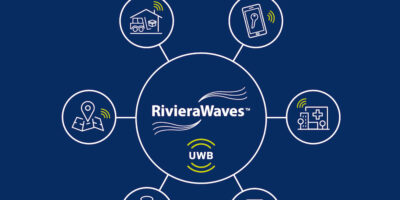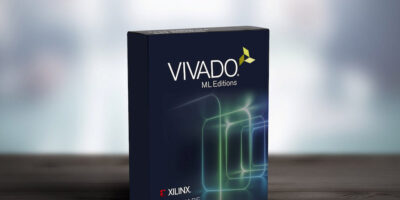Entry barriers for ultra-wideband (UWB) IP in mobile, automotive, consumer and IoT applications are lowered with the RivieraWaves UWB IP claims CEVA. It can be combined with Bluetooth-UWB IP to target new use cases using both standards in emerging high-volume applications, says the company.
The RivieraWaves UWB platform IP delivers secure, centimeter-level accuracy and robust location information through time-of-flight (ToF) ranging and angle-of-arrival (AoA) processing. The MAC and PHY IP complies with the IEEE 802.15.4z standard to support enhanced ranging and security based on IEEE 802.15.4z HRP in accordance with the FiRa Consortium requirements
It is suitable for a range of low power applications and products such as tags for pinpoint asset finding, secure digital key functionality for door locks, real-time location services (RTLS) and payment systems.
Aimed at lowering the entry barrier and accelerating time-to-market for semiconductor and IoT companies looking to develop UWB-enabled devices, the RivieraWaves UWB platform IP consists of a power-optimised hardware PHY and a flexible, low latency hardware and software MAC layer. The MAC layer software can be implemented on the CEVA-BX1 DSP when deployed in combination with other connectivity workloads or modes such as direction finding, localisation or radar, or as a standalone UWB MAC on commercial Arm and RISC-V MCUs.
A flexible radio interface enables the IP to be deployed with customers’ own RF technology or with CEVA partners’ RF IP.
The RivieraWaves UWB is available for licensing now.
CEVA licenses wireless connectivity and smart sensing technologies for a smarter, safer, connected world. It provides digital signal processors (DSPs), AI engines, wireless platforms, cryptography cores and complementary software for sensor fusion, image enhancement, computer vision, voice input and artificial intelligence. The company also offers Intrinsix turnkey chip design services, helping customers address complex and time-critical IC design projects. Its technologies and chip design skills are used by semiconductor, system companies and OEMs to create power-efficient, intelligent, secure and connected devices for the mobile, consumer, automotive, robotics, industrial, aerospace and defence markets and the IoT.







